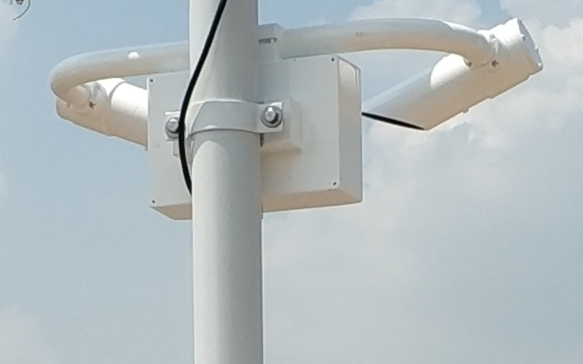

— Blogs —
—Products—
 Consumer hotline +8618073152920
Consumer hotline +8618073152920 WhatsApp:+8615367865107
Address:Room 102, District D, Houhu Industrial Park, Yuelu District, Changsha City, Hunan Province, China
Product knowledge
Time:2024-04-07 22:31:29 Popularity:598
Visibility meters play an indispensable role in meteorological observations. Its working principle is mainly to use the principle of light scattering to judge the concentration and size of suspended particles in the air, so as to estimate the visibility.
In meteorological observations, visibility meters can provide accurate visibility data in real time, which is crucial for weather forecasting and early warning. By monitoring the concentration and size of particles in the atmosphere, visibility meters help meteorological departments to better predict the visibility in haze, rain and snow and other weather conditions, and then take appropriate early warning measures to reduce the risk of accidents in traffic and other related areas.
Visibility meters play an important role in meteorological observation, and the following are their applications in different scenarios:
1. Airport meteorological services:
In aviation, visibility is one of the most important indicators of flight safety. Airport weather stations use visibility meters to provide real-time visibility data, which is crucial for aircraft take-off and landing. This data helps pilots to determine whether they can land safely on the runway and whether ground controllers need to schedule the aircraft to wait for better weather conditions.
2. Weather forecasting and climate research:
Meteorological researchers use visibility meters to collect long-term and short-term visibility data that is important for understanding and predicting weather patterns, storm development, and climate change.
3. Environmental monitoring and disaster prevention:
In the event of natural disasters, such as dust storms, haze and storms, the data provided by visibility meters help to monitor and assess the extent of the impact of the disaster and provide a basis for emergency management and disaster prevention and mitigation.
Visibility meters can be used to monitor atmospheric visibility in industrial areas, cities and natural environments, helping to assess air quality and take necessary measures for environmental protection and pollution control.

4. Road traffic: Visibility is also crucial for road traffic safety. Meteorological stations and traffic management centres use visibility meters to monitor visibility conditions on roads and make traffic management decisions based on real-time data, such as speed limits and warnings to drivers, in order to reduce the risk of traffic accidents under adverse weather conditions such as fog and haze.
5. Remote sensing applications:
In the field of satellite remote sensing, the data provided by the visibility meter can be used to correct satellite images and improve the accuracy and reliability of remote sensing data.
6. Urban meteorology and intelligent transport systems:
The field of urban meteorology uses visibility meters to study urban climate, the urban heat island effect, and city-specific meteorological phenomena. Visibility instruments are also integrated into intelligent transport systems to provide real-time traffic information and advice during inclement weather.
7. Alpine and polar meteorological studies:
Visibility instruments are particularly important for understanding and predicting extreme weather conditions in alpine and polar regions, where meteorological changes have a significant impact on the global climate.
8. Marine navigation:
Visibility also has an important impact on maritime navigation. Marine weather stations use visibility instruments to monitor visibility in harbours and ocean passages to provide ship crews with timely visibility information to help them navigate safely.
In summary, visibility instruments are a key component of meteorological observation networks, providing fundamental data to support a wide range of fields, including weather forecasting, aviation safety, environmental protection and climate change research.
Related recommendations
Sensors & Weather Stations Catalog
Agriculture Sensors and Weather Stations Catalog-NiuBoL.pdf
Weather Stations Catalog-NiuBoL.pdf
Related products
 Combined air temperature and relative humidity sensor
Combined air temperature and relative humidity sensor Soil Moisture Temperature sensor for irrigation
Soil Moisture Temperature sensor for irrigation Soil pH sensor RS485 soil Testing instrument soil ph meter for agriculture
Soil pH sensor RS485 soil Testing instrument soil ph meter for agriculture Wind Speed sensor Output Modbus/RS485/Analog/0-5V/4-20mA
Wind Speed sensor Output Modbus/RS485/Analog/0-5V/4-20mA Tipping bucket rain gauge for weather monitoring auto rainfall sensor RS485/Outdoor/stainless steel
Tipping bucket rain gauge for weather monitoring auto rainfall sensor RS485/Outdoor/stainless steel Pyranometer Solar Radiation Sensor 4-20mA/RS485
Pyranometer Solar Radiation Sensor 4-20mA/RS485
Screenshot, WhatsApp to identify the QR code
WhatsApp number:+8615367865107
(Click on WhatsApp to copy and add friends)